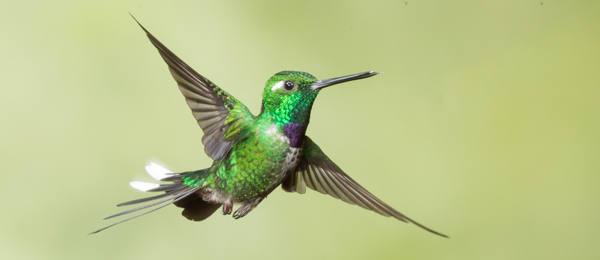
Trip Report: Hummingbirds and the Wildlife of Ecuador
2018
44 Hummingbird Species!
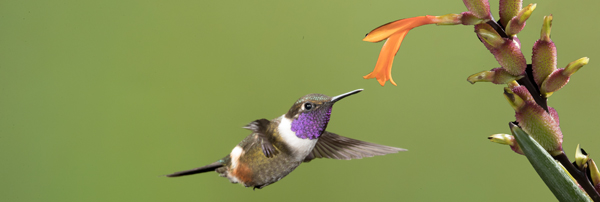
This year's Hummingbirds and the wildlife of Ecuador Photo Tour may have been the most successful ever. We had a total of 44 species with the group, and another 5 when Mary and I scouted a new location for our next tour!
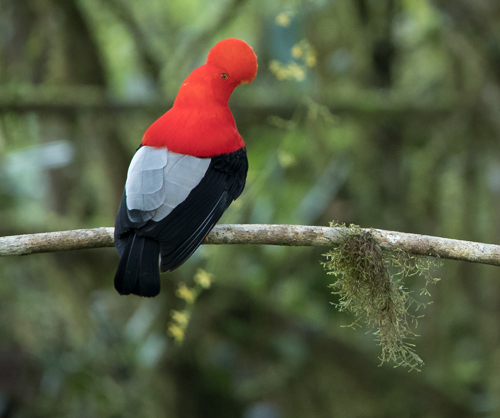
One of the non-hummingbird highlights was our trip to a Cock-of-the-Rock lek, where males display -- buzzing, wing-flashing, hopping from branch to branch, and giving us some of the best views we've had of this species.
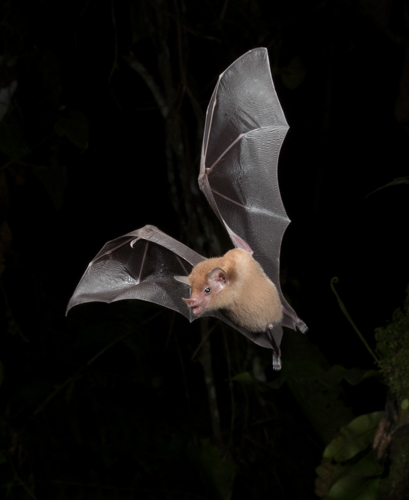
I also located two areas where I photographed bats at night using the Cognisys RangeIR and three flashes. This was an unexpected opportunity, but one we will incorporate into our future tours!
Honestly, this year's trips were so busy that I simply didn't take the time to keep up a day-to-day journal. The text that follows is a summary of the two trips.
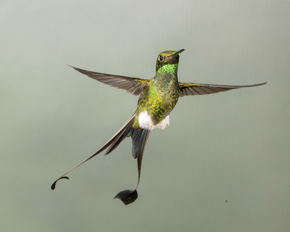
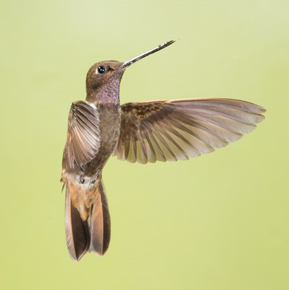
Booted Racquettail; Brown Inca
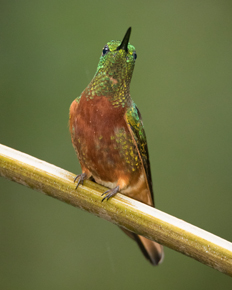
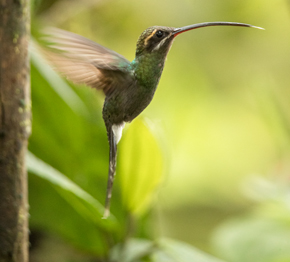
Chestnut-breasted Coronet; Green Hermit
Since a picture is worth a thousand words I decided to let the photos tell most of the story for this year’s incredible photo tour to Ecuador. This year we offered two back-to-back hummingbird photo shoots, where we visited several different locations that covered the cloud forest of the western slope of the Andes, the high country of the eastern Andies, and the Andes foothills in the upper reaches of the Amazon basin. Using three different lodges as our bases we made several half-day excursions to other hummingbird and tanager locations, and one trip as we searched for the Spectacled Bear. We were unsuccessful with the bear, but our guide – the same one we’ve used on our last trip and a great guy – managed to photograph one of our other sought-after species, a Mountain Tapir!
In all our group saw over 40 species of hummingbird, and most of these were photographed. For a few we had only one sighting or so, and those hummingbirds may have slipped passed our cameras. The rest, however, we photographed, using the high speed flash equipment I brought with me and also by using our hotshoe flashes or natural light.
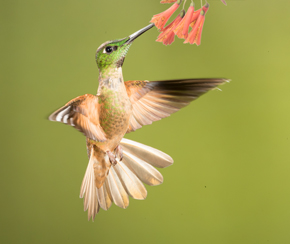
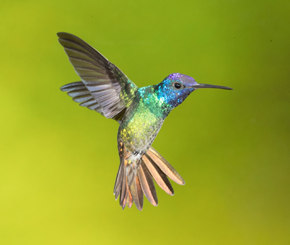
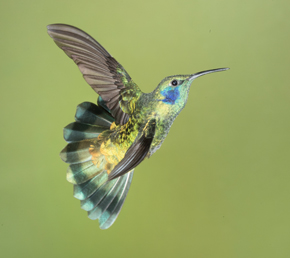
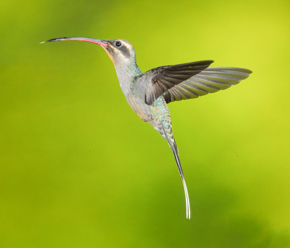
Fawn-breasted
Brilliant; Golden-tailed Sapphire;
Green Violetear; Tawny-bellied Hermit
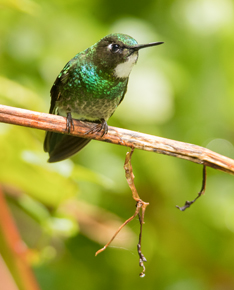 Left: Tourmaline Sunangle.
Left: Tourmaline Sunangle.
One of the features that sets our Ecuador hummingbird shoots apart from all others is this: We have a high speed flash setup for every participant. We do not have two or more photographers trying to get the best angle, or taking turns at a set, or having to use their own (and sometimes limited) gear. Instead, our photographers shot at our four-flash system. Because different birds visited different feeders at different times, we also rotate each photographer through all of our hummingbird sets. In that way, photographers not only shot different hummers, but different lighting arrangements and different backgrounds.
This is a lot of work. Here’s just some of the equipment we brought to Ecuador for this shoot:
24 Electronic flashes
7 Phottix triggers – 7 transmitters and 20 receivers
13 Lightstands
12 Manfrotto Articulating Arms with Super Clamps (15) and 12 camera platforms
25 mini-ballheads
140 AA rechargeable batteries
30 AAA rechargeable batteries
6 Background frames
15 backgrounds for the hummingbirds
8 Wimberley Plamps
2 Range IR camera/flash triggers
1 Sabre camera/flash trigger
and assorted odds and ends like wire, scissors, hummingbird feeders, tape, and a whole lot more!
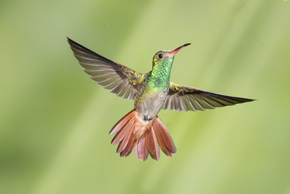
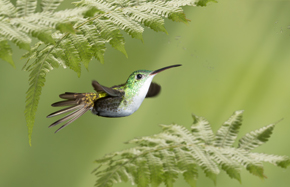
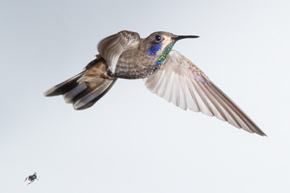
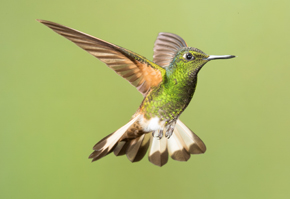
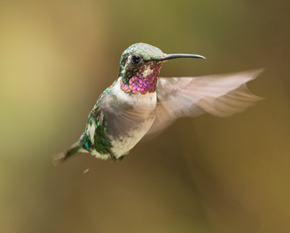
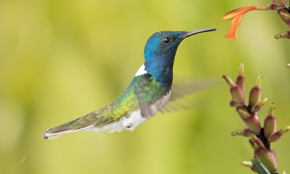
Top: Rufous-tailed Hummingbird; Andean Emerald
Middle: Brown Violetear; Buff-tailed Coronet
Bottom: White-bellied Woodstar; White-necked Jacobin
For this report I’m not detailing the various locations for a couple of reasons. The outfitter we use has scouted out some great locations, and frankly our guide, and ourselves, would like our participants to enjoy these areas. Too often, guides or tour leaders simply check out what others are doing and copy those itineraries. I’m happy to share the information on all the gear we bring (most tours wouldn’t come close with this), but I’ll respect our guides wishes and keep the locations private.
In addition to the 40 odd Hummingbirds, we did quite well with several other species, including a few that are among the rarest and most difficult birds to photograph, something of the Holy Grail for birders. These were the Antpittas, forest birds that normally sneak through the shadows of the forest, rarely seen, and occasionally heard. We had great shooting with three different species, including the largest – the Giant Antpitta, and a very colorful Antpitta, the Chestnut-crowned Antpitta.
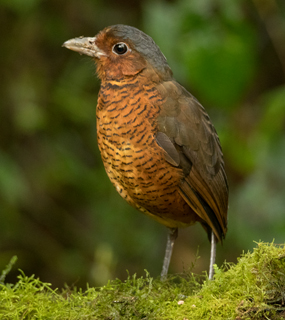
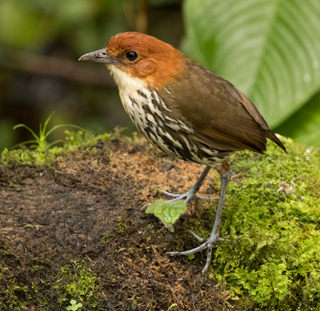
Giant Antpitta; Chestnut-crowned Antpitta
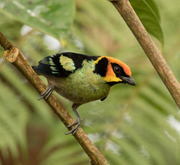
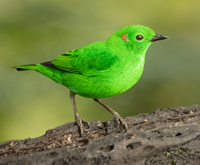
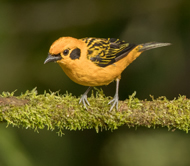
Flame-faced; Glistening Green; and Golden Tanagers
We did very well with Tanagers, including such striking birds as the Glistening Green and the Flame-faced Tanagers. At one of our forest locations we had Toucan Barbets and another Barbet that must be the model for the game Angry Birds, the 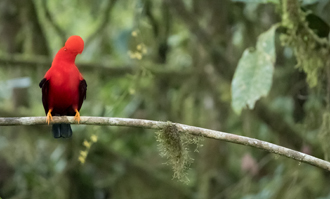 Red-headed Barbet. One of the iconic species of the Andean cloud forest is the brilliant Andean Cock-of-the-Rock, where we photographed the males at a lek where, at dawn, the birds creak and croak and flash their wings and hop, a primal display that is breath-taking.
Red-headed Barbet. One of the iconic species of the Andean cloud forest is the brilliant Andean Cock-of-the-Rock, where we photographed the males at a lek where, at dawn, the birds creak and croak and flash their wings and hop, a primal display that is breath-taking.
On one of the two tours we also had great shooting of one of the top predators of the cloud forest, the Tayra. This little-known mammal belongs to the Mustelid family, the weasels, and somewhat resembles a cross between a Wolverine and a Fisher. Normally shy – I’ve only seen about a dozen in all my trips to Central and South America – the two we had were quite bold. A real highlight!
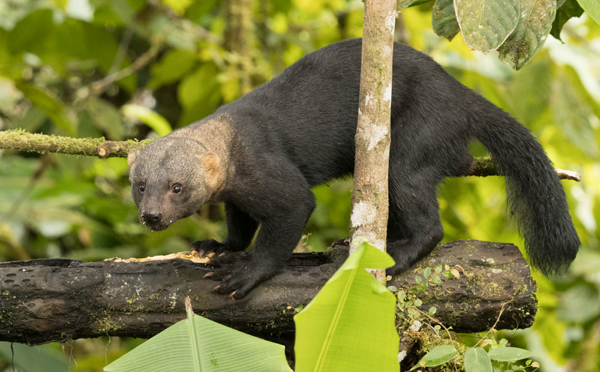
Tayra, a rare, arboreal member of the weasel family
While our days were so busy in shooting birds, a few participants joined me on some after-dinner night hikes to look for and to photograph macro subjects. At night the forest seems to come alive with insects and frogs and spiders that go unnoticed, or are in hiding, during the day. We photographed six inch long Walking Sticks, Katydids with antennae as long as their bodies, and colorful spiders sitting on leaves.
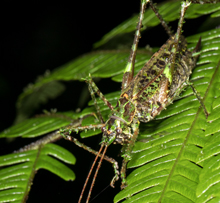
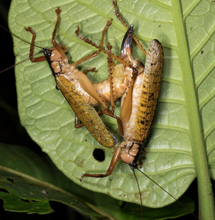
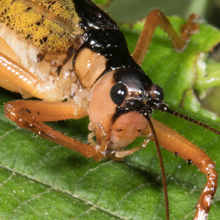
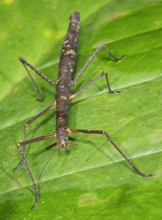
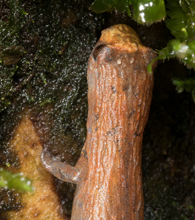
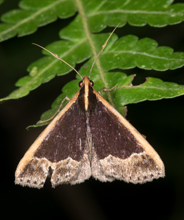
Top: various well-camouflaged grasshoppers and katydids - the middle shot caught two in mating in the protection of a leaf.
Bottom: Walking stick; an unusual arboreal Salamander -- salamanders are very rare in the tropics and this was a real highlight to find!; a moth.
On one of our hikes we had a very funny experience. One of our participants saw a brilliant patch of blue, and at first glance it was assumed to be a butterfly. Three photographers then approached the ‘butterfly’ and proceeded to photograph it. I went last, and as I approached the ‘butterfly’ I noticed that the 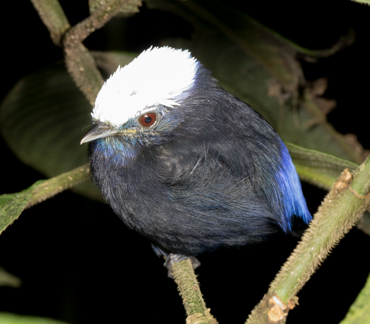 patch of blue wasn’t butterfly scales, it was feathers! I thought the guys were joking with me, but they weren’t … the butterfly turned out to be a Blue-rumped Manakin, a bird our guide had never seen in that forest!
patch of blue wasn’t butterfly scales, it was feathers! I thought the guys were joking with me, but they weren’t … the butterfly turned out to be a Blue-rumped Manakin, a bird our guide had never seen in that forest!
At another location we photographed Torrent Ducks, a beautiful duck that resides, as its name implies, in torrents, the crashing rapids of mountain rivers. We had some great shooting, and at that same location we managed to photograph White-capped Dippers, Masked Trogons, and Turquoise Jays.
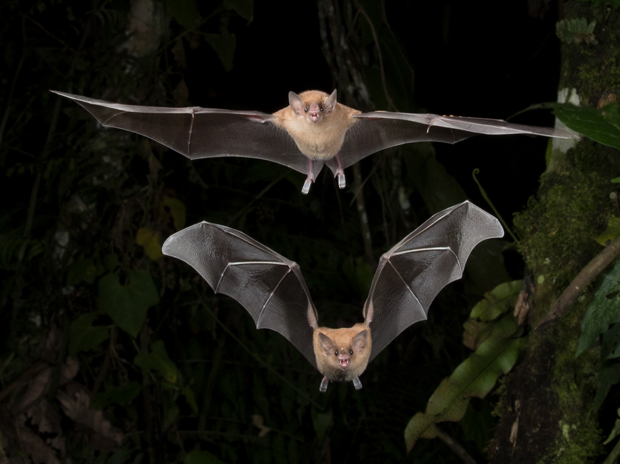
I used a RangeIR to shoot these nectar-feeding bats (species still to be identified!). In two hours I shot about 200 bats, culling these down to the best 30 or 40. Weather permitting, we'll be including the bats in our future shoots!
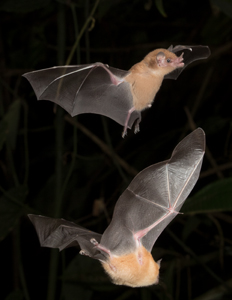
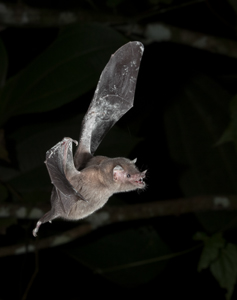
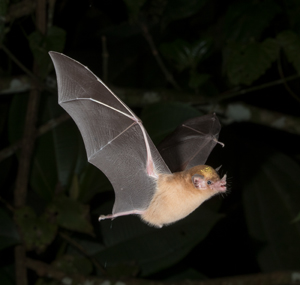
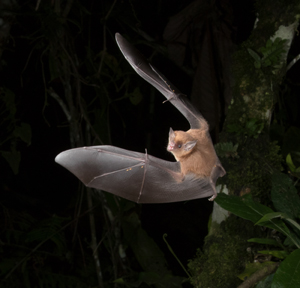
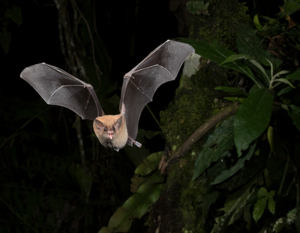
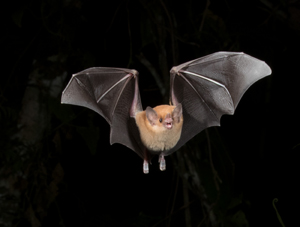
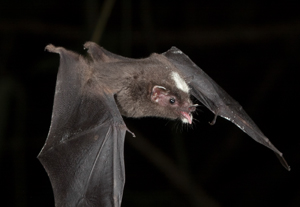
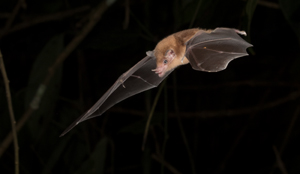
Another highlight that will now be incorporated into our future Ecuador hummingbird shoots were bats! I found two different locations where, weather permitting, our future groups will be able to photograph bats as part of the shoot.This was an exciting and unexpected opportunity. I used a RangeIR for my shots,and on the second tour one of our participants, who brought a Sabre and flash gear for nocturnal shooting, set up and shot bats! I did as well, at a secondary location, and we managed to get some great shots.
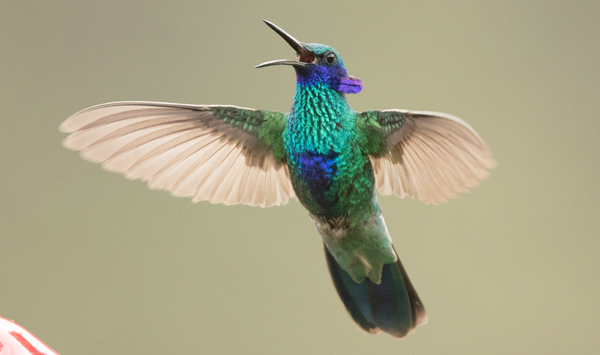
Sparkling Violetear
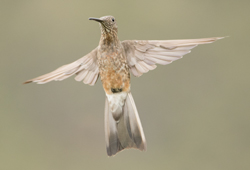
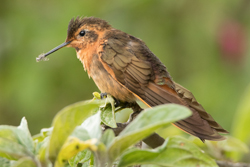
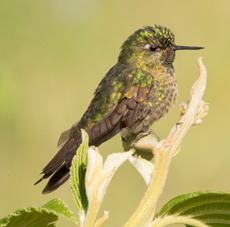
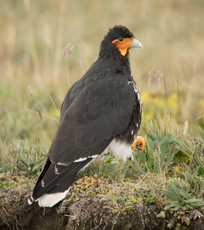
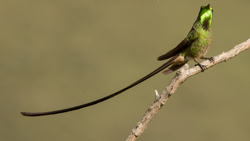
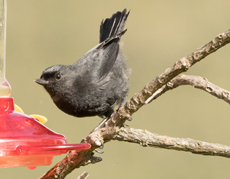
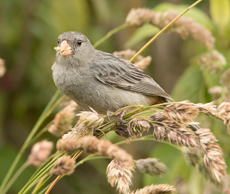
Top: Giant Hummingbird; Shining Sunbeam
Row 2: Tyrian Metaltail; Carunculated Caracara
Row 3: Black-tailed Trainbearer
Bottom Row: Black Flowerpiercer; Plain-colored
Seedeater
After our tours Mary and I, and a few of the hummingbird participants, headed to the Galapagos Islands for a two-week photo tour. Afterwards, Mary and I stayed one extra day, and the next morning we headed up into the Andes to look for bear and hummingbirds. We visited a great location where we added four more hummingbirds, including the two largest species, the Giant Hummingbird and the Great Sapphirewing, as well as the spectacular Black-tailed Trainbearer Hummingbird, Andean Ibis, and Carunculated Caracaras. On our next tours, we’ll include this location as part of the tour.
.jpg)
Well, that’s enough words. Enjoy the photos and join us in 2020 when we’ll be offering our Ecuador Hummingbird Photo Tours once again, as well as another great trip to the Galapagos. See you there!
Read this year's brochure (2018) for more details ... but our Trip Reports tell it all.
Check out all our previous Ecuador Hummingbird Trip Reports.
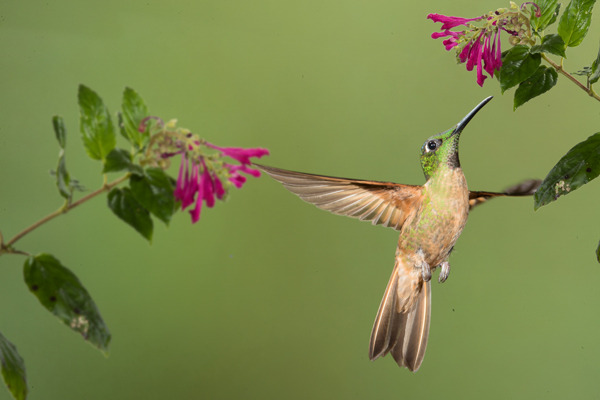
Check out the latest videos:
The Ultimate Antarctica video is now available!
Jaguars and the Wildlife of the Pantanal Photo Tour
How-to Video on Photographing Bats
Svalbard Video
Join us on Facebook at: Follow Hoot Hollow
Office Phone: (717) 543-6423
Or FAX us at: (717) 543-5342
Mary and Joe are proud to endorse the Photo Retailer that has
done the absolute most in supporting nature photography in all
its facets ---

Check out the Monthly Specials
from Hunt's

Trip Report: Hummingbirds and the Wildlife of Ecuador
2018
44 Hummingbird Species!

This year's Hummingbirds and the wildlife of Ecuador Photo Tour may have been the most successful ever. We had a total of 44 species with the group, and another 5 when Mary and I scouted a new location for our next tour!

One of the non-hummingbird highlights was our trip to a Cock-of-the-Rock lek, where males display -- buzzing, wing-flashing, hopping from branch to branch, and giving us some of the best views we've had of this species.

I also located two areas where I photographed bats at night using the Cognisys RangeIR and three flashes. This was an unexpected opportunity, but one we will incorporate into our future tours!
Honestly, this year's trips were so busy that I simply didn't take the time to keep up a day-to-day journal. The text that follows is a summary of the two trips.


Booted Racquettail; Brown Inca


Chestnut-breasted Coronet; Green Hermit
Since a picture is worth a thousand words I decided to let the photos tell most of the story for this year’s incredible photo tour to Ecuador. This year we offered two back-to-back hummingbird photo shoots, where we visited several different locations that covered the cloud forest of the western slope of the Andes, the high country of the eastern Andies, and the Andes foothills in the upper reaches of the Amazon basin. Using three different lodges as our bases we made several half-day excursions to other hummingbird and tanager locations, and one trip as we searched for the Spectacled Bear. We were unsuccessful with the bear, but our guide – the same one we’ve used on our last trip and a great guy – managed to photograph one of our other sought-after species, a Mountain Tapir!
In all our group saw over 40 species of hummingbird, and most of these were photographed. For a few we had only one sighting or so, and those hummingbirds may have slipped passed our cameras. The rest, however, we photographed, using the high speed flash equipment I brought with me and also by using our hotshoe flashes or natural light.




Fawn-breasted
Brilliant; Golden-tailed Sapphire;
Green Violetear; Tawny-bellied Hermit
 Left: Tourmaline Sunangle.
Left: Tourmaline Sunangle.
One of the features that sets our Ecuador hummingbird shoots apart from all others is this: We have a high speed flash setup for every participant. We do not have two or more photographers trying to get the best angle, or taking turns at a set, or having to use their own (and sometimes limited) gear. Instead, our photographers shot at our four-flash system. Because different birds visited different feeders at different times, we also rotate each photographer through all of our hummingbird sets. In that way, photographers not only shot different hummers, but different lighting arrangements and different backgrounds.
This is a lot of work. Here’s just some of the equipment we brought to Ecuador for this shoot:
24 Electronic flashes
7 Phottix triggers – 7 transmitters and 20 receivers
13 Lightstands
12 Manfrotto Articulating Arms with Super Clamps (15) and 12 camera platforms
25 mini-ballheads
140 AA rechargeable batteries
30 AAA rechargeable batteries
6 Background frames
15 backgrounds for the hummingbirds
8 Wimberley Plamps
2 Range IR camera/flash triggers
1 Sabre camera/flash trigger
and assorted odds and ends like wire, scissors, hummingbird feeders, tape, and a whole lot more!






Top: Rufous-tailed Hummingbird; Andean Emerald
Middle: Brown Violetear; Buff-tailed Coronet
Bottom: White-bellied Woodstar; White-necked Jacobin
For this report I’m not detailing the various locations for a couple of reasons. The outfitter we use has scouted out some great locations, and frankly our guide, and ourselves, would like our participants to enjoy these areas. Too often, guides or tour leaders simply check out what others are doing and copy those itineraries. I’m happy to share the information on all the gear we bring (most tours wouldn’t come close with this), but I’ll respect our guides wishes and keep the locations private.
In addition to the 40 odd Hummingbirds, we did quite well with several other species, including a few that are among the rarest and most difficult birds to photograph, something of the Holy Grail for birders. These were the Antpittas, forest birds that normally sneak through the shadows of the forest, rarely seen, and occasionally heard. We had great shooting with three different species, including the largest – the Giant Antpitta, and a very colorful Antpitta, the Chestnut-crowned Antpitta.


Giant Antpitta; Chestnut-crowned Antpitta



Flame-faced; Glistening Green; and Golden Tanagers
We did very well with Tanagers, including such striking birds as the Glistening Green and the Flame-faced Tanagers. At one of our forest locations we had Toucan Barbets and another Barbet that must be the model for the game Angry Birds, the  Red-headed Barbet. One of the iconic species of the Andean cloud forest is the brilliant Andean Cock-of-the-Rock, where we photographed the males at a lek where, at dawn, the birds creak and croak and flash their wings and hop, a primal display that is breath-taking.
Red-headed Barbet. One of the iconic species of the Andean cloud forest is the brilliant Andean Cock-of-the-Rock, where we photographed the males at a lek where, at dawn, the birds creak and croak and flash their wings and hop, a primal display that is breath-taking.
On one of the two tours we also had great shooting of one of the top predators of the cloud forest, the Tayra. This little-known mammal belongs to the Mustelid family, the weasels, and somewhat resembles a cross between a Wolverine and a Fisher. Normally shy – I’ve only seen about a dozen in all my trips to Central and South America – the two we had were quite bold. A real highlight!

Tayra, a rare, arboreal member of the weasel family
While our days were so busy in shooting birds, a few participants joined me on some after-dinner night hikes to look for and to photograph macro subjects. At night the forest seems to come alive with insects and frogs and spiders that go unnoticed, or are in hiding, during the day. We photographed six inch long Walking Sticks, Katydids with antennae as long as their bodies, and colorful spiders sitting on leaves.






Top: various well-camouflaged grasshoppers and katydids - the middle shot caught two in mating in the protection of a leaf.
Bottom: Walking stick; an unusual arboreal Salamander -- salamanders are very rare in the tropics and this was a real highlight to find!; a moth.
On one of our hikes we had a very funny experience. One of our participants saw a brilliant patch of blue, and at first glance it was assumed to be a butterfly. Three photographers then approached the ‘butterfly’ and proceeded to photograph it. I went last, and as I approached the ‘butterfly’ I noticed that the  patch of blue wasn’t butterfly scales, it was feathers! I thought the guys were joking with me, but they weren’t … the butterfly turned out to be a Blue-rumped Manakin, a bird our guide had never seen in that forest!
patch of blue wasn’t butterfly scales, it was feathers! I thought the guys were joking with me, but they weren’t … the butterfly turned out to be a Blue-rumped Manakin, a bird our guide had never seen in that forest!
At another location we photographed Torrent Ducks, a beautiful duck that resides, as its name implies, in torrents, the crashing rapids of mountain rivers. We had some great shooting, and at that same location we managed to photograph White-capped Dippers, Masked Trogons, and Turquoise Jays.

I used a RangeIR to shoot these nectar-feeding bats (species still to be identified!). In two hours I shot about 200 bats, culling these down to the best 30 or 40. Weather permitting, we'll be including the bats in our future shoots!








Another highlight that will now be incorporated into our future Ecuador hummingbird shoots were bats! I found two different locations where, weather permitting, our future groups will be able to photograph bats as part of the shoot.This was an exciting and unexpected opportunity. I used a RangeIR for my shots,and on the second tour one of our participants, who brought a Sabre and flash gear for nocturnal shooting, set up and shot bats! I did as well, at a secondary location, and we managed to get some great shots.

Sparkling Violetear







Top: Giant Hummingbird; Shining Sunbeam
Row 2: Tyrian Metaltail; Carunculated Caracara
Row 3: Black-tailed Trainbearer
Bottom Row: Black Flowerpiercer; Plain-colored
Seedeater
After our tours Mary and I, and a few of the hummingbird participants, headed to the Galapagos Islands for a two-week photo tour. Afterwards, Mary and I stayed one extra day, and the next morning we headed up into the Andes to look for bear and hummingbirds. We visited a great location where we added four more hummingbirds, including the two largest species, the Giant Hummingbird and the Great Sapphirewing, as well as the spectacular Black-tailed Trainbearer Hummingbird, Andean Ibis, and Carunculated Caracaras. On our next tours, we’ll include this location as part of the tour.
.jpg)
Well, that’s enough words. Enjoy the photos and join us in 2020 when we’ll be offering our Ecuador Hummingbird Photo Tours once again, as well as another great trip to the Galapagos. See you there!
Read this year's brochure (2018) for more details ... but our Trip Reports tell it all.
Check out all our previous Ecuador Hummingbird Trip Reports.

Check out the latest videos:
The Ultimate Antarctica video is now available!
Jaguars and the Wildlife of the Pantanal Photo Tour
How-to Video on Photographing Bats
Svalbard Video
Join us on Facebook at: Follow Hoot Hollow
Office Phone: (717) 543-6423
Or FAX us at: (717) 543-5342
Mary and Joe are proud to endorse the Photo Retailer that has
done the absolute most in supporting nature photography in all
its facets ---

Check out the Monthly Specials
from Hunt's

Trip Report: Hummingbirds and the Wildlife of Ecuador
2018
44 Hummingbird Species!

This year's Hummingbirds and the wildlife of Ecuador Photo Tour may have been the most successful ever. We had a total of 44 species with the group, and another 5 when Mary and I scouted a new location for our next tour!

One of the non-hummingbird highlights was our trip to a Cock-of-the-Rock lek, where males display -- buzzing, wing-flashing, hopping from branch to branch, and giving us some of the best views we've had of this species.

I also located two areas where I photographed bats at night using the Cognisys RangeIR and three flashes. This was an unexpected opportunity, but one we will incorporate into our future tours!
Honestly, this year's trips were so busy that I simply didn't take the time to keep up a day-to-day journal. The text that follows is a summary of the two trips.


Booted Racquettail; Brown Inca


Chestnut-breasted Coronet; Green Hermit
Since a picture is worth a thousand words I decided to let the photos tell most of the story for this year’s incredible photo tour to Ecuador. This year we offered two back-to-back hummingbird photo shoots, where we visited several different locations that covered the cloud forest of the western slope of the Andes, the high country of the eastern Andies, and the Andes foothills in the upper reaches of the Amazon basin. Using three different lodges as our bases we made several half-day excursions to other hummingbird and tanager locations, and one trip as we searched for the Spectacled Bear. We were unsuccessful with the bear, but our guide – the same one we’ve used on our last trip and a great guy – managed to photograph one of our other sought-after species, a Mountain Tapir!
In all our group saw over 40 species of hummingbird, and most of these were photographed. For a few we had only one sighting or so, and those hummingbirds may have slipped passed our cameras. The rest, however, we photographed, using the high speed flash equipment I brought with me and also by using our hotshoe flashes or natural light.




Fawn-breasted
Brilliant; Golden-tailed Sapphire;
Green Violetear; Tawny-bellied Hermit
 Left: Tourmaline Sunangle.
Left: Tourmaline Sunangle.
One of the features that sets our Ecuador hummingbird shoots apart from all others is this: We have a high speed flash setup for every participant. We do not have two or more photographers trying to get the best angle, or taking turns at a set, or having to use their own (and sometimes limited) gear. Instead, our photographers shot at our four-flash system. Because different birds visited different feeders at different times, we also rotate each photographer through all of our hummingbird sets. In that way, photographers not only shot different hummers, but different lighting arrangements and different backgrounds.
This is a lot of work. Here’s just some of the equipment we brought to Ecuador for this shoot:
24 Electronic flashes
7 Phottix triggers – 7 transmitters and 20 receivers
13 Lightstands
12 Manfrotto Articulating Arms with Super Clamps (15) and 12 camera platforms
25 mini-ballheads
140 AA rechargeable batteries
30 AAA rechargeable batteries
6 Background frames
15 backgrounds for the hummingbirds
8 Wimberley Plamps
2 Range IR camera/flash triggers
1 Sabre camera/flash trigger
and assorted odds and ends like wire, scissors, hummingbird feeders, tape, and a whole lot more!






Top: Rufous-tailed Hummingbird; Andean Emerald
Middle: Brown Violetear; Buff-tailed Coronet
Bottom: White-bellied Woodstar; White-necked Jacobin
For this report I’m not detailing the various locations for a couple of reasons. The outfitter we use has scouted out some great locations, and frankly our guide, and ourselves, would like our participants to enjoy these areas. Too often, guides or tour leaders simply check out what others are doing and copy those itineraries. I’m happy to share the information on all the gear we bring (most tours wouldn’t come close with this), but I’ll respect our guides wishes and keep the locations private.
In addition to the 40 odd Hummingbirds, we did quite well with several other species, including a few that are among the rarest and most difficult birds to photograph, something of the Holy Grail for birders. These were the Antpittas, forest birds that normally sneak through the shadows of the forest, rarely seen, and occasionally heard. We had great shooting with three different species, including the largest – the Giant Antpitta, and a very colorful Antpitta, the Chestnut-crowned Antpitta.


Giant Antpitta; Chestnut-crowned Antpitta



Flame-faced; Glistening Green; and Golden Tanagers
We did very well with Tanagers, including such striking birds as the Glistening Green and the Flame-faced Tanagers. At one of our forest locations we had Toucan Barbets and another Barbet that must be the model for the game Angry Birds, the  Red-headed Barbet. One of the iconic species of the Andean cloud forest is the brilliant Andean Cock-of-the-Rock, where we photographed the males at a lek where, at dawn, the birds creak and croak and flash their wings and hop, a primal display that is breath-taking.
Red-headed Barbet. One of the iconic species of the Andean cloud forest is the brilliant Andean Cock-of-the-Rock, where we photographed the males at a lek where, at dawn, the birds creak and croak and flash their wings and hop, a primal display that is breath-taking.
On one of the two tours we also had great shooting of one of the top predators of the cloud forest, the Tayra. This little-known mammal belongs to the Mustelid family, the weasels, and somewhat resembles a cross between a Wolverine and a Fisher. Normally shy – I’ve only seen about a dozen in all my trips to Central and South America – the two we had were quite bold. A real highlight!

Tayra, a rare, arboreal member of the weasel family
While our days were so busy in shooting birds, a few participants joined me on some after-dinner night hikes to look for and to photograph macro subjects. At night the forest seems to come alive with insects and frogs and spiders that go unnoticed, or are in hiding, during the day. We photographed six inch long Walking Sticks, Katydids with antennae as long as their bodies, and colorful spiders sitting on leaves.






Top: various well-camouflaged grasshoppers and katydids - the middle shot caught two in mating in the protection of a leaf.
Bottom: Walking stick; an unusual arboreal Salamander -- salamanders are very rare in the tropics and this was a real highlight to find!; a moth.
On one of our hikes we had a very funny experience. One of our participants saw a brilliant patch of blue, and at first glance it was assumed to be a butterfly. Three photographers then approached the ‘butterfly’ and proceeded to photograph it. I went last, and as I approached the ‘butterfly’ I noticed that the  patch of blue wasn’t butterfly scales, it was feathers! I thought the guys were joking with me, but they weren’t … the butterfly turned out to be a Blue-rumped Manakin, a bird our guide had never seen in that forest!
patch of blue wasn’t butterfly scales, it was feathers! I thought the guys were joking with me, but they weren’t … the butterfly turned out to be a Blue-rumped Manakin, a bird our guide had never seen in that forest!
At another location we photographed Torrent Ducks, a beautiful duck that resides, as its name implies, in torrents, the crashing rapids of mountain rivers. We had some great shooting, and at that same location we managed to photograph White-capped Dippers, Masked Trogons, and Turquoise Jays.

I used a RangeIR to shoot these nectar-feeding bats (species still to be identified!). In two hours I shot about 200 bats, culling these down to the best 30 or 40. Weather permitting, we'll be including the bats in our future shoots!








Another highlight that will now be incorporated into our future Ecuador hummingbird shoots were bats! I found two different locations where, weather permitting, our future groups will be able to photograph bats as part of the shoot.This was an exciting and unexpected opportunity. I used a RangeIR for my shots,and on the second tour one of our participants, who brought a Sabre and flash gear for nocturnal shooting, set up and shot bats! I did as well, at a secondary location, and we managed to get some great shots.

Sparkling Violetear







Top: Giant Hummingbird; Shining Sunbeam
Row 2: Tyrian Metaltail; Carunculated Caracara
Row 3: Black-tailed Trainbearer
Bottom Row: Black Flowerpiercer; Plain-colored
Seedeater
After our tours Mary and I, and a few of the hummingbird participants, headed to the Galapagos Islands for a two-week photo tour. Afterwards, Mary and I stayed one extra day, and the next morning we headed up into the Andes to look for bear and hummingbirds. We visited a great location where we added four more hummingbirds, including the two largest species, the Giant Hummingbird and the Great Sapphirewing, as well as the spectacular Black-tailed Trainbearer Hummingbird, Andean Ibis, and Carunculated Caracaras. On our next tours, we’ll include this location as part of the tour.
.jpg)
Well, that’s enough words. Enjoy the photos and join us in 2020 when we’ll be offering our Ecuador Hummingbird Photo Tours once again, as well as another great trip to the Galapagos. See you there!
Read this year's brochure (2018) for more details ... but our Trip Reports tell it all.
Check out all our previous Ecuador Hummingbird Trip Reports.

Check out the latest videos:
The Ultimate Antarctica video is now available!
Jaguars and the Wildlife of the Pantanal Photo Tour
How-to Video on Photographing Bats
Svalbard Video
Join us on Facebook at: Follow Hoot Hollow
Office Phone: (717) 543-6423
Or FAX us at: (717) 543-5342
Mary and Joe are proud to endorse the Photo Retailer that has
done the absolute most in supporting nature photography in all
its facets ---

Check out the Monthly Specials
from Hunt's

Trip Report: Hummingbirds and the Wildlife of Ecuador
2018
44 Hummingbird Species!

This year's Hummingbirds and the wildlife of Ecuador Photo Tour may have been the most successful ever. We had a total of 44 species with the group, and another 5 when Mary and I scouted a new location for our next tour!

One of the non-hummingbird highlights was our trip to a Cock-of-the-Rock lek, where males display -- buzzing, wing-flashing, hopping from branch to branch, and giving us some of the best views we've had of this species.

I also located two areas where I photographed bats at night using the Cognisys RangeIR and three flashes. This was an unexpected opportunity, but one we will incorporate into our future tours!
Honestly, this year's trips were so busy that I simply didn't take the time to keep up a day-to-day journal. The text that follows is a summary of the two trips.


Booted Racquettail; Brown Inca


Chestnut-breasted Coronet; Green Hermit
Since a picture is worth a thousand words I decided to let the photos tell most of the story for this year’s incredible photo tour to Ecuador. This year we offered two back-to-back hummingbird photo shoots, where we visited several different locations that covered the cloud forest of the western slope of the Andes, the high country of the eastern Andies, and the Andes foothills in the upper reaches of the Amazon basin. Using three different lodges as our bases we made several half-day excursions to other hummingbird and tanager locations, and one trip as we searched for the Spectacled Bear. We were unsuccessful with the bear, but our guide – the same one we’ve used on our last trip and a great guy – managed to photograph one of our other sought-after species, a Mountain Tapir!
In all our group saw over 40 species of hummingbird, and most of these were photographed. For a few we had only one sighting or so, and those hummingbirds may have slipped passed our cameras. The rest, however, we photographed, using the high speed flash equipment I brought with me and also by using our hotshoe flashes or natural light.




Fawn-breasted
Brilliant; Golden-tailed Sapphire;
Green Violetear; Tawny-bellied Hermit
 Left: Tourmaline Sunangle.
Left: Tourmaline Sunangle.
One of the features that sets our Ecuador hummingbird shoots apart from all others is this: We have a high speed flash setup for every participant. We do not have two or more photographers trying to get the best angle, or taking turns at a set, or having to use their own (and sometimes limited) gear. Instead, our photographers shot at our four-flash system. Because different birds visited different feeders at different times, we also rotate each photographer through all of our hummingbird sets. In that way, photographers not only shot different hummers, but different lighting arrangements and different backgrounds.
This is a lot of work. Here’s just some of the equipment we brought to Ecuador for this shoot:
24 Electronic flashes
7 Phottix triggers – 7 transmitters and 20 receivers
13 Lightstands
12 Manfrotto Articulating Arms with Super Clamps (15) and 12 camera platforms
25 mini-ballheads
140 AA rechargeable batteries
30 AAA rechargeable batteries
6 Background frames
15 backgrounds for the hummingbirds
8 Wimberley Plamps
2 Range IR camera/flash triggers
1 Sabre camera/flash trigger
and assorted odds and ends like wire, scissors, hummingbird feeders, tape, and a whole lot more!






Top: Rufous-tailed Hummingbird; Andean Emerald
Middle: Brown Violetear; Buff-tailed Coronet
Bottom: White-bellied Woodstar; White-necked Jacobin
For this report I’m not detailing the various locations for a couple of reasons. The outfitter we use has scouted out some great locations, and frankly our guide, and ourselves, would like our participants to enjoy these areas. Too often, guides or tour leaders simply check out what others are doing and copy those itineraries. I’m happy to share the information on all the gear we bring (most tours wouldn’t come close with this), but I’ll respect our guides wishes and keep the locations private.
In addition to the 40 odd Hummingbirds, we did quite well with several other species, including a few that are among the rarest and most difficult birds to photograph, something of the Holy Grail for birders. These were the Antpittas, forest birds that normally sneak through the shadows of the forest, rarely seen, and occasionally heard. We had great shooting with three different species, including the largest – the Giant Antpitta, and a very colorful Antpitta, the Chestnut-crowned Antpitta.


Giant Antpitta; Chestnut-crowned Antpitta



Flame-faced; Glistening Green; and Golden Tanagers
We did very well with Tanagers, including such striking birds as the Glistening Green and the Flame-faced Tanagers. At one of our forest locations we had Toucan Barbets and another Barbet that must be the model for the game Angry Birds, the  Red-headed Barbet. One of the iconic species of the Andean cloud forest is the brilliant Andean Cock-of-the-Rock, where we photographed the males at a lek where, at dawn, the birds creak and croak and flash their wings and hop, a primal display that is breath-taking.
Red-headed Barbet. One of the iconic species of the Andean cloud forest is the brilliant Andean Cock-of-the-Rock, where we photographed the males at a lek where, at dawn, the birds creak and croak and flash their wings and hop, a primal display that is breath-taking.
On one of the two tours we also had great shooting of one of the top predators of the cloud forest, the Tayra. This little-known mammal belongs to the Mustelid family, the weasels, and somewhat resembles a cross between a Wolverine and a Fisher. Normally shy – I’ve only seen about a dozen in all my trips to Central and South America – the two we had were quite bold. A real highlight!

Tayra, a rare, arboreal member of the weasel family
While our days were so busy in shooting birds, a few participants joined me on some after-dinner night hikes to look for and to photograph macro subjects. At night the forest seems to come alive with insects and frogs and spiders that go unnoticed, or are in hiding, during the day. We photographed six inch long Walking Sticks, Katydids with antennae as long as their bodies, and colorful spiders sitting on leaves.






Top: various well-camouflaged grasshoppers and katydids - the middle shot caught two in mating in the protection of a leaf.
Bottom: Walking stick; an unusual arboreal Salamander -- salamanders are very rare in the tropics and this was a real highlight to find!; a moth.
On one of our hikes we had a very funny experience. One of our participants saw a brilliant patch of blue, and at first glance it was assumed to be a butterfly. Three photographers then approached the ‘butterfly’ and proceeded to photograph it. I went last, and as I approached the ‘butterfly’ I noticed that the  patch of blue wasn’t butterfly scales, it was feathers! I thought the guys were joking with me, but they weren’t … the butterfly turned out to be a Blue-rumped Manakin, a bird our guide had never seen in that forest!
patch of blue wasn’t butterfly scales, it was feathers! I thought the guys were joking with me, but they weren’t … the butterfly turned out to be a Blue-rumped Manakin, a bird our guide had never seen in that forest!
At another location we photographed Torrent Ducks, a beautiful duck that resides, as its name implies, in torrents, the crashing rapids of mountain rivers. We had some great shooting, and at that same location we managed to photograph White-capped Dippers, Masked Trogons, and Turquoise Jays.

I used a RangeIR to shoot these nectar-feeding bats (species still to be identified!). In two hours I shot about 200 bats, culling these down to the best 30 or 40. Weather permitting, we'll be including the bats in our future shoots!








Another highlight that will now be incorporated into our future Ecuador hummingbird shoots were bats! I found two different locations where, weather permitting, our future groups will be able to photograph bats as part of the shoot.This was an exciting and unexpected opportunity. I used a RangeIR for my shots,and on the second tour one of our participants, who brought a Sabre and flash gear for nocturnal shooting, set up and shot bats! I did as well, at a secondary location, and we managed to get some great shots.

Sparkling Violetear







Top: Giant Hummingbird; Shining Sunbeam
Row 2: Tyrian Metaltail; Carunculated Caracara
Row 3: Black-tailed Trainbearer
Bottom Row: Black Flowerpiercer; Plain-colored
Seedeater
After our tours Mary and I, and a few of the hummingbird participants, headed to the Galapagos Islands for a two-week photo tour. Afterwards, Mary and I stayed one extra day, and the next morning we headed up into the Andes to look for bear and hummingbirds. We visited a great location where we added four more hummingbirds, including the two largest species, the Giant Hummingbird and the Great Sapphirewing, as well as the spectacular Black-tailed Trainbearer Hummingbird, Andean Ibis, and Carunculated Caracaras. On our next tours, we’ll include this location as part of the tour.
.jpg)
Well, that’s enough words. Enjoy the photos and join us in 2020 when we’ll be offering our Ecuador Hummingbird Photo Tours once again, as well as another great trip to the Galapagos. See you there!
Read this year's brochure (2018) for more details ... but our Trip Reports tell it all.
Check out all our previous Ecuador Hummingbird Trip Reports.

Check out the latest videos:
The Ultimate Antarctica video is now available!
Jaguars and the Wildlife of the Pantanal Photo Tour
How-to Video on Photographing Bats
Svalbard Video
Join us on Facebook at: Follow Hoot Hollow
Office Phone: (717) 543-6423
Or FAX us at: (717) 543-5342
Mary and Joe are proud to endorse the Photo Retailer that has
done the absolute most in supporting nature photography in all
its facets ---

Check out the Monthly Specials
from Hunt's
Trip Report: Hummingbirds and the Wildlife of Ecuador
2018
44 Hummingbird Species!

This year's Hummingbirds and the wildlife of Ecuador Photo Tour may have been the most successful ever. We had a total of 44 species with the group, and another 5 when Mary and I scouted a new location for our next tour!

One of the non-hummingbird highlights was our trip to a Cock-of-the-Rock lek, where males display -- buzzing, wing-flashing, hopping from branch to branch, and giving us some of the best views we've had of this species.

I also located two areas where I photographed bats at night using the Cognisys RangeIR and three flashes. This was an unexpected opportunity, but one we will incorporate into our future tours!
Honestly, this year's trips were so busy that I simply didn't take the time to keep up a day-to-day journal. The text that follows is a summary of the two trips.


Booted Racquettail; Brown Inca


Chestnut-breasted Coronet; Green Hermit
Since a picture is worth a thousand words I decided to let the photos tell most of the story for this year’s incredible photo tour to Ecuador. This year we offered two back-to-back hummingbird photo shoots, where we visited several different locations that covered the cloud forest of the western slope of the Andes, the high country of the eastern Andies, and the Andes foothills in the upper reaches of the Amazon basin. Using three different lodges as our bases we made several half-day excursions to other hummingbird and tanager locations, and one trip as we searched for the Spectacled Bear. We were unsuccessful with the bear, but our guide – the same one we’ve used on our last trip and a great guy – managed to photograph one of our other sought-after species, a Mountain Tapir!
In all our group saw over 40 species of hummingbird, and most of these were photographed. For a few we had only one sighting or so, and those hummingbirds may have slipped passed our cameras. The rest, however, we photographed, using the high speed flash equipment I brought with me and also by using our hotshoe flashes or natural light.




Fawn-breasted
Brilliant; Golden-tailed Sapphire;
Green Violetear; Tawny-bellied Hermit
 Left: Tourmaline Sunangle.
Left: Tourmaline Sunangle.
One of the features that sets our Ecuador hummingbird shoots apart from all others is this: We have a high speed flash setup for every participant. We do not have two or more photographers trying to get the best angle, or taking turns at a set, or having to use their own (and sometimes limited) gear. Instead, our photographers shot at our four-flash system. Because different birds visited different feeders at different times, we also rotate each photographer through all of our hummingbird sets. In that way, photographers not only shot different hummers, but different lighting arrangements and different backgrounds.
This is a lot of work. Here’s just some of the equipment we brought to Ecuador for this shoot:
24 Electronic flashes
7 Phottix triggers – 7 transmitters and 20 receivers
13 Lightstands
12 Manfrotto Articulating Arms with Super Clamps (15) and 12 camera platforms
25 mini-ballheads
140 AA rechargeable batteries
30 AAA rechargeable batteries
6 Background frames
15 backgrounds for the hummingbirds
8 Wimberley Plamps
2 Range IR camera/flash triggers
1 Sabre camera/flash trigger
and assorted odds and ends like wire, scissors, hummingbird feeders, tape, and a whole lot more!






Top: Rufous-tailed Hummingbird; Andean Emerald
Middle: Brown Violetear; Buff-tailed Coronet
Bottom: White-bellied Woodstar; White-necked Jacobin
For this report I’m not detailing the various locations for a couple of reasons. The outfitter we use has scouted out some great locations, and frankly our guide, and ourselves, would like our participants to enjoy these areas. Too often, guides or tour leaders simply check out what others are doing and copy those itineraries. I’m happy to share the information on all the gear we bring (most tours wouldn’t come close with this), but I’ll respect our guides wishes and keep the locations private.
In addition to the 40 odd Hummingbirds, we did quite well with several other species, including a few that are among the rarest and most difficult birds to photograph, something of the Holy Grail for birders. These were the Antpittas, forest birds that normally sneak through the shadows of the forest, rarely seen, and occasionally heard. We had great shooting with three different species, including the largest – the Giant Antpitta, and a very colorful Antpitta, the Chestnut-crowned Antpitta.


Giant Antpitta; Chestnut-crowned Antpitta



Flame-faced; Glistening Green; and Golden Tanagers
We did very well with Tanagers, including such striking birds as the Glistening Green and the Flame-faced Tanagers. At one of our forest locations we had Toucan Barbets and another Barbet that must be the model for the game Angry Birds, the  Red-headed Barbet. One of the iconic species of the Andean cloud forest is the brilliant Andean Cock-of-the-Rock, where we photographed the males at a lek where, at dawn, the birds creak and croak and flash their wings and hop, a primal display that is breath-taking.
Red-headed Barbet. One of the iconic species of the Andean cloud forest is the brilliant Andean Cock-of-the-Rock, where we photographed the males at a lek where, at dawn, the birds creak and croak and flash their wings and hop, a primal display that is breath-taking.
On one of the two tours we also had great shooting of one of the top predators of the cloud forest, the Tayra. This little-known mammal belongs to the Mustelid family, the weasels, and somewhat resembles a cross between a Wolverine and a Fisher. Normally shy – I’ve only seen about a dozen in all my trips to Central and South America – the two we had were quite bold. A real highlight!

Tayra, a rare, arboreal member of the weasel family
While our days were so busy in shooting birds, a few participants joined me on some after-dinner night hikes to look for and to photograph macro subjects. At night the forest seems to come alive with insects and frogs and spiders that go unnoticed, or are in hiding, during the day. We photographed six inch long Walking Sticks, Katydids with antennae as long as their bodies, and colorful spiders sitting on leaves.






Top: various well-camouflaged grasshoppers and katydids - the middle shot caught two in mating in the protection of a leaf.
Bottom: Walking stick; an unusual arboreal Salamander -- salamanders are very rare in the tropics and this was a real highlight to find!; a moth.
On one of our hikes we had a very funny experience. One of our participants saw a brilliant patch of blue, and at first glance it was assumed to be a butterfly. Three photographers then approached the ‘butterfly’ and proceeded to photograph it. I went last, and as I approached the ‘butterfly’ I noticed that the  patch of blue wasn’t butterfly scales, it was feathers! I thought the guys were joking with me, but they weren’t … the butterfly turned out to be a Blue-rumped Manakin, a bird our guide had never seen in that forest!
patch of blue wasn’t butterfly scales, it was feathers! I thought the guys were joking with me, but they weren’t … the butterfly turned out to be a Blue-rumped Manakin, a bird our guide had never seen in that forest!
At another location we photographed Torrent Ducks, a beautiful duck that resides, as its name implies, in torrents, the crashing rapids of mountain rivers. We had some great shooting, and at that same location we managed to photograph White-capped Dippers, Masked Trogons, and Turquoise Jays.

I used a RangeIR to shoot these nectar-feeding bats (species still to be identified!). In two hours I shot about 200 bats, culling these down to the best 30 or 40. Weather permitting, we'll be including the bats in our future shoots!








Another highlight that will now be incorporated into our future Ecuador hummingbird shoots were bats! I found two different locations where, weather permitting, our future groups will be able to photograph bats as part of the shoot.This was an exciting and unexpected opportunity. I used a RangeIR for my shots,and on the second tour one of our participants, who brought a Sabre and flash gear for nocturnal shooting, set up and shot bats! I did as well, at a secondary location, and we managed to get some great shots.

Sparkling Violetear







Top: Giant Hummingbird; Shining Sunbeam
Row 2: Tyrian Metaltail; Carunculated Caracara
Row 3: Black-tailed Trainbearer
Bottom Row: Black Flowerpiercer; Plain-colored
Seedeater
After our tours Mary and I, and a few of the hummingbird participants, headed to the Galapagos Islands for a two-week photo tour. Afterwards, Mary and I stayed one extra day, and the next morning we headed up into the Andes to look for bear and hummingbirds. We visited a great location where we added four more hummingbirds, including the two largest species, the Giant Hummingbird and the Great Sapphirewing, as well as the spectacular Black-tailed Trainbearer Hummingbird, Andean Ibis, and Carunculated Caracaras. On our next tours, we’ll include this location as part of the tour.
.jpg)
Well, that’s enough words. Enjoy the photos and join us in 2020 when we’ll be offering our Ecuador Hummingbird Photo Tours once again, as well as another great trip to the Galapagos. See you there!
Read this year's brochure (2018) for more details ... but our Trip Reports tell it all.
Check out all our previous Ecuador Hummingbird Trip Reports.

Check out the latest videos:
The Ultimate Antarctica video is now available!
Jaguars and the Wildlife of the Pantanal Photo Tour
How-to Video on Photographing Bats
Svalbard Video
Join us on Facebook at: Follow Hoot Hollow
Office Phone: (717) 543-6423
Or FAX us at: (717) 543-5342
Mary and Joe are proud to endorse the Photo Retailer that has
done the absolute most in supporting nature photography in all
its facets ---

Check out the Monthly Specials
from Hunt's
Join us on Facebook at: Follow Hoot Hollow
Office Phone: (717) 543-6423
Or FAX us at: (717) 543-5342
Mary and Joe are proud to endorse the Photo Retailer that has
done the absolute most in supporting nature photography in all
its facets ---

Check out the Monthly Specials
from Hunt's



